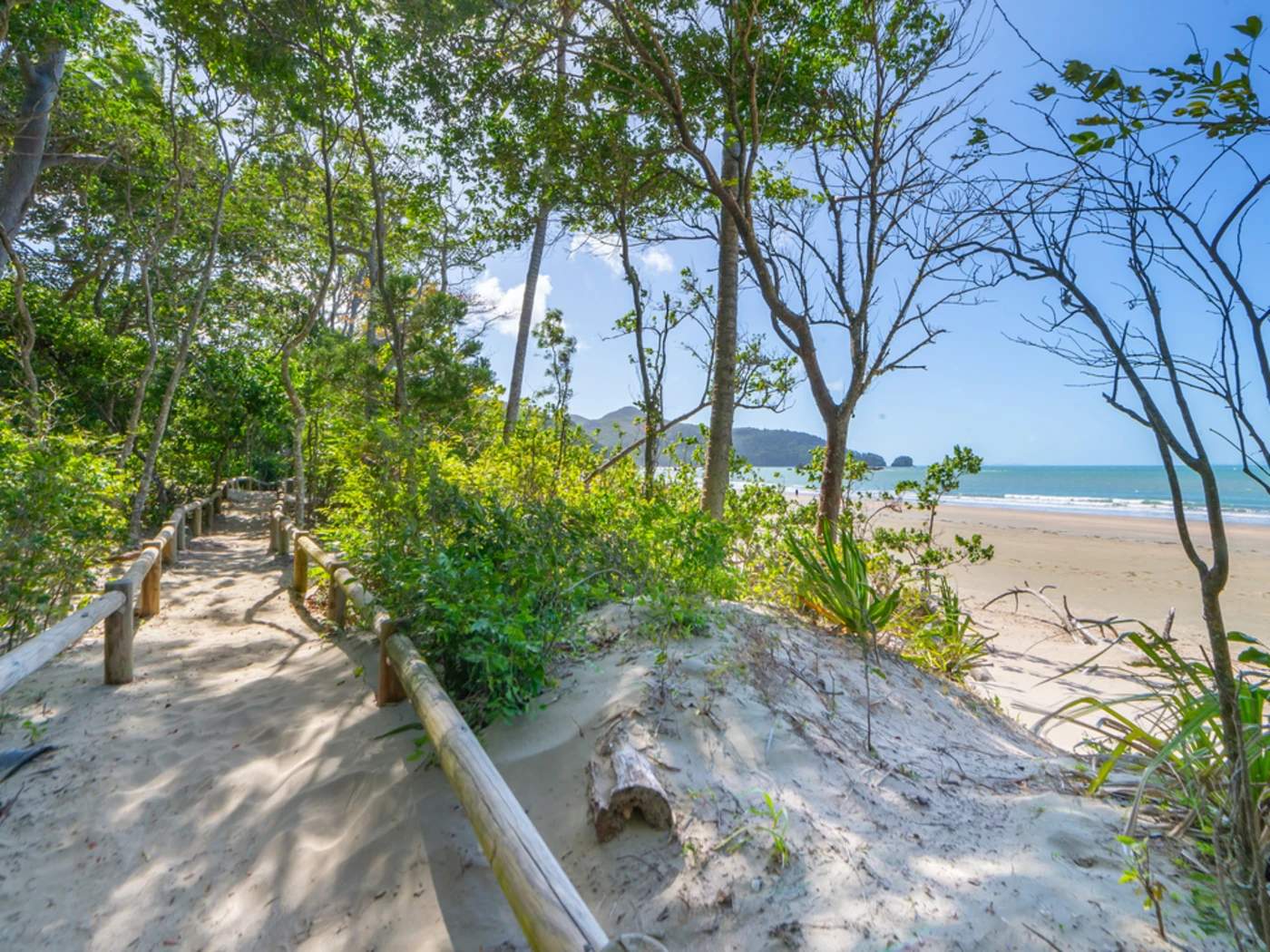
Things to do in Cape Hillsborough
Beaches in Cape Hillsborough
Cape Hillsborough Nature Tourist Park is a beachcomber's paradise, set along the stunning Casuarina Bay, between Cape Hillsborough and Andrews Point. Discover caves, rock pools, unique geological formations and wide stretches of sand. Keep an eye out for sand bubbler crabs crafting their intricate patterns along the shore.

Walks in Cape Hillsborough
Enjoy four incredible trails in Cape Hillsborough National Park, such as the Diversity Boardwalk, Andrews Point views, waterfalls and butterflies at Beachcomber Cove, and the Yuibera Plant Trail to learn about the heritage of the Yuibera people.

Aboriginal Culture in Cape Hillsborough
The traditional custodians of our land are the Yuibera people. Learn about their culture and relationship with the land on the Diversity Boardwalk and the Aboriginal Plant Walk. You’ll come across a rich variety of plants, from hickory wattle, used to make spears and axes, to ghost gum, used as an antiseptic, to cheese fruit, used to treat colds.

Geology and minerals in Cape Hillsborough
Our landscape is volcanic – dotted with rugged rock formations, limestone beds and unusual minerals. As you wander along the beach and through the national park, you’ll discover fossils formed 33 million years ago, volcanic plugs that date back 32 million years and glistening golden flecks in the waves created by mica.

Vegetation in Cape Hillsborough
Our volcanic history and subtropical climate have given rise to incredibly diverse and abundant plant life – from mangroves and she-oak woodland to ironbark forests and ancient rainforests. Enjoy them from the comfort of your accommodation, or explore further on one of our lovely walks. Here’s your guide to the many ecosystems that make up Cape Hillsborough National Park.

History of Cape Hillsborough
Cape Hillsborough is as rich in history as it is in natural beauty. It emerged 30 million years ago, when a volcano erupted, covering the area in lava flows. Today, you can see the results of this upheaval in the cape’s dramatic, 268-metre-high headland. Just as important to the area is its indigenous history, which you can learn about on our walking trails.
